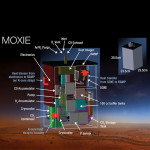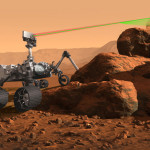
NASA Mars 2020 Rover
Mission Type: Rover
Operator: NASA / JPL
Mission Duration Planned: 1 Mars year
Manufacturer: Jet Propulsion Laboratory
Launch Date: 2020 (planned)
Spacecraft Component: Rover
Website: http://mars.jpl.nasa.gov/mars2020/
Building on the success of Curiosity’s landing, NASA announced plans for a new robotic science rover set to launch in 2020. This announcement affirms the agency’s commitment to a bold exploration program that meets our nation’s scientific and human exploration objectives.
The proposed 2020 rover mission is part of NASA’s Mars Exploration Program, a long-term effort of robotic exploration of the red planet. Designed to advance high-priority science goals for Mars exploration, the mission would address key questions about the potential for life on Mars. The mission would also provide opportunities to gather knowledge and demonstrate technologies that address the challenges of future human expeditions to Mars.
The mission would take advantage of a favorable launch opportunity in 2020 when Earth and Mars are in advantageous positions in their orbits for a Mars landing. That means that it would take less power to get to Mars relative to other times when Earth and Mars are in different positions in their orbits around the sun. The highly capable rover would be based on NASA’s successful Mars Science Laboratory mission architecture, including its Curiosity rover and proven landing system, to keep mission costs and risks as low as possible.
The budget for this mission is contingent on future appropriations. The project will assess options for infusing new capabilities through investments by NASA’s Space Technology Program, Human Exploration and Operations Mission Directorate, and contributions from international partners.
Studying Mars’ Habitability and Preparing for Future Human Missions
Following established processes of NASA’s Science Mission Directorate, the science planning process began with the establishment of a science definition team, which was tasked to outline the mission’s objectives and the strategies to achieve them, including developing a realistic surface operations scenario, suggestions for threshold science measurements that would meet the proposed objectives, and a proof-of-concept instrument suite. NASA then openly competed the opportunity for the mission’s specific payload and science instruments. NASA selected seven science instruments. On the basis of this selection, the Mars 2020 rover would study diverse rocks and soils to understand past habitable conditions on Mars and to seek signs of ancient microbial life, monitor weather and dust in the Martian atmosphere, and test the ability to extract oxygen from the Red Planet’s carbon-dioxide atmosphere to prepare for future human exploration. Rock-studying instruments would assist scientists in understanding which samples would be most promising for the Mars 2020 rover to core, collect, and cache (store).The Mars 2020 mission design would respond to recommendations found in the National Research Council’s 2011 Planetary Science Decadal Survey, as well as findings of the Mars Program Planning Group, established to assist NASA in planning the future of Mars exploration.
- Creating a Returnable Cache of Martian Samples
- X-Ray Instrument for Mars 2020 Rover is PIXL
- Mars Oxygen ISRU Experiment Instrument for Mars 2020 Rover is MOXIE
- Artist’s Concept of the SuperCam Instrument for Mars 2020 Rover
Relying on Innovative Technologies
The mission would rely on prior technological innovations, especially for entry, descent, and landing. As successfully demonstrated by the Mars Science Laboratory mission, the spacecraft would use a guided entry, descent, and landing system, which includes a parachute, descent vehicle, and, during the final seconds prior to landing, an approach called a “skycrane maneuver” for lowering the rover on a tether to the surface. This landing system represents a huge step in Mars surface science and exploration capability because it provides the ability to land a very large, heavy rover on the surface of Mars in a more precise landing area. The rover design would also enable a Curiosity-class, long-range mobility system on the surface of the red planet (5-20 kilometers or about 3 to 12 miles) for the investigation of diverse rocks and soils, and potentially other studies.



